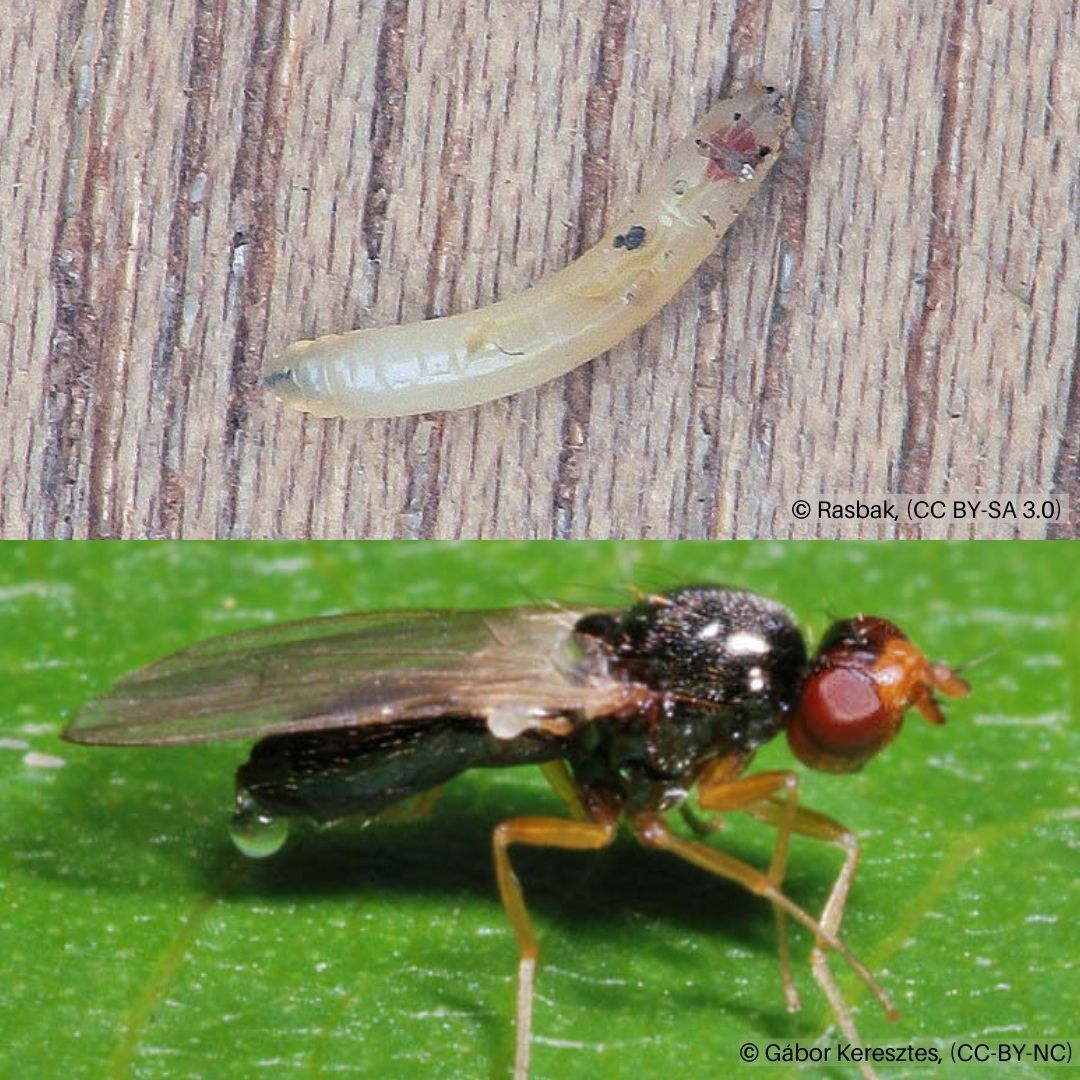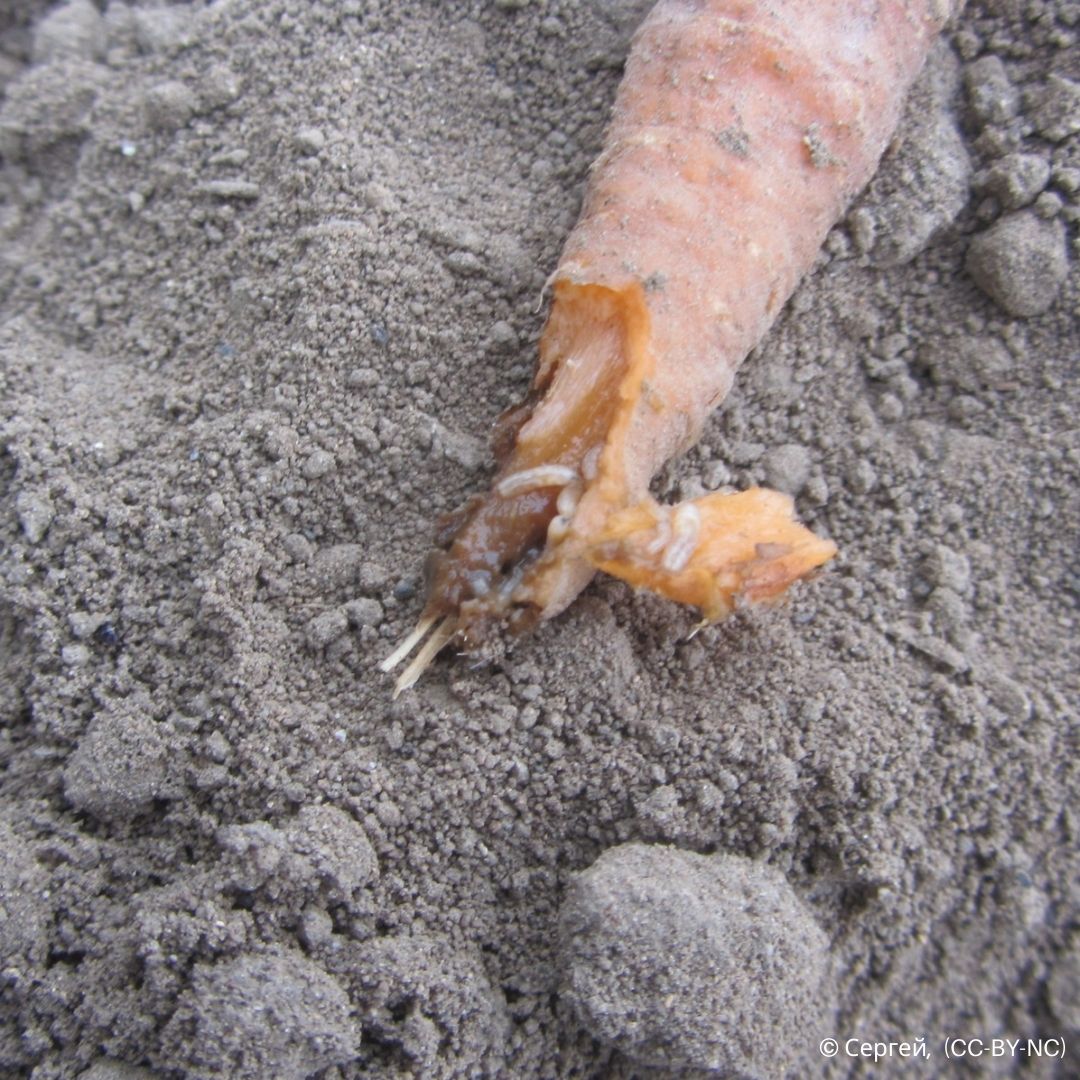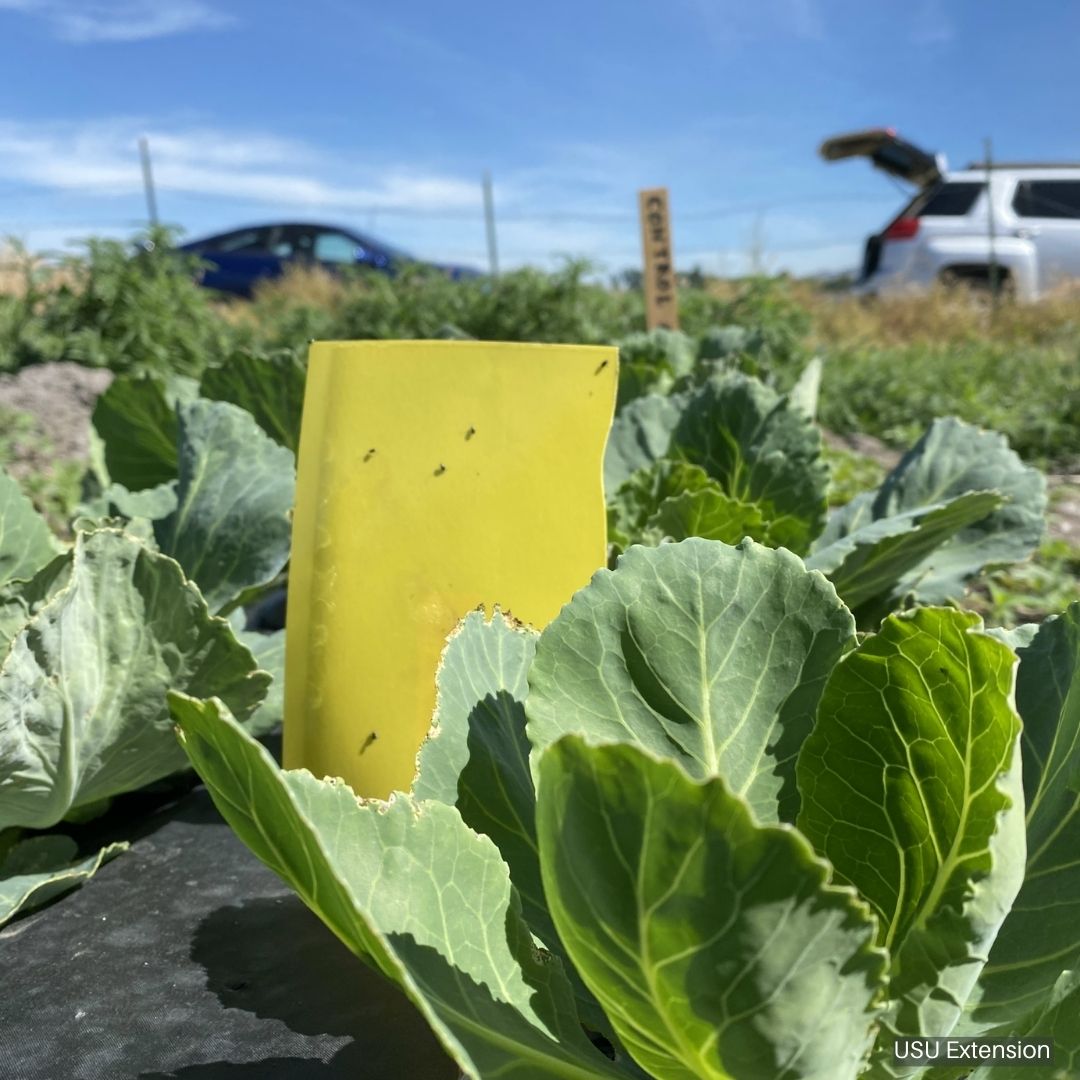Carrot Rust Fly
 Carrot Rust Fly Larvae and Adult
Carrot Rust Fly Larvae and Adult
 Larvae and Carrot Feeding Damage
Larvae and Carrot Feeding Damage
HOSTS
- Carrot
- Celery
- Parsnip
- Turnip
DESCRIPTION
Adults are small, black, slender flies with a reddish yellow head and yellowish legs. Larvae are creamy white maggots with a tapered body. Larvae tunnel through the lower third of carrot roots with rasping mouth hooks and may kill plants.
BIOLOGY
Egg | Larva | Pupa | Adult
Carrot rust flies are present from May until harvest. They have 2-3 generations per year. They overwinter as pupae in the soil or occasionally as larvae in roots.
SYMPTOMS
Feeding damage occurs as mined roots, particularly the lower third. Young plants may be killed while older carrots sustain scarring, with burrows often a red rusty color. Damage can promote rotting.
GENERAL MANAGEMENT
-
This pest is sporadic in Utah, and when present, can be economically damaging
- Monitor adults with yellow sticky cards beginning in late April and throughout the season
- Row covers
- Harvest carrots in blocks (rather than selectively) as soon as possible
- Remove all carrots from the ground after harvest
INSECTICIDES
Consider treatment when there are 2-3 adults per sticky trap per field.



